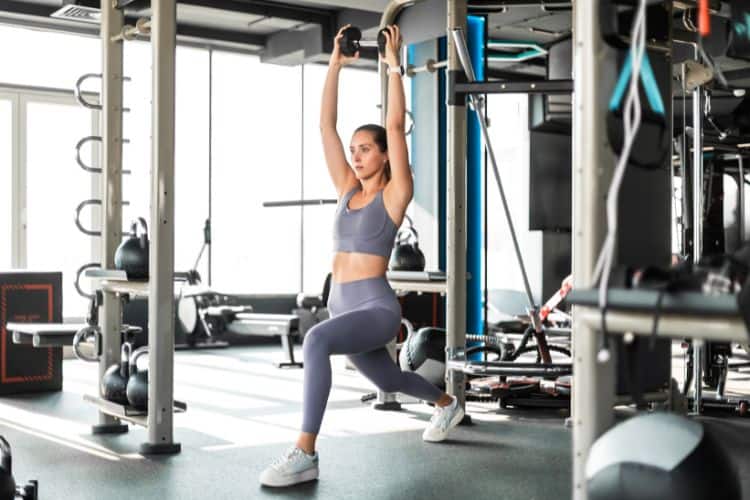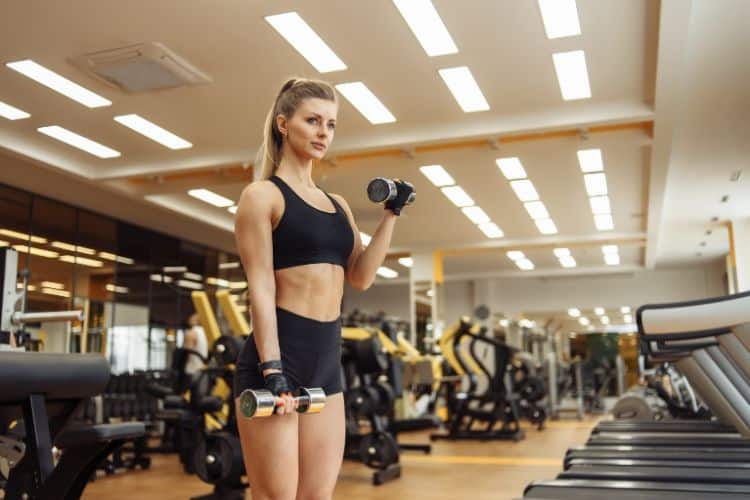Best Plyometrics Exercises Unleashing Power And Agility
Plyometric exercises, often called “jump training,” are a dynamic and high-impact fitness approach designed to improve power, speed, and agility. They are particularly effective for women looking to boost their athletic performance, enhance muscle tone, or shed fat. This guide delves deep into plyometrics exercises, explaining their benefits, providing workout routines, and offering tips for safety and effectiveness.
What Are Plyometrics Exercises?
Plyometric exercises involve rapid and explosive movements that engage the stretch-shortening cycle of muscles. They are characterized by a quick transition from a muscle lengthening (eccentric) phase to a muscle shortening (concentric) phase, creating powerful movements. These exercises are commonly used by athletes but are equally beneficial for women of all fitness levels.
Why Women Should Include Plyometrics in Their Fitness Routine
Plyometric training is not just for athletes. Women can greatly benefit from incorporating these exercises into their routines for the following reasons:
- Improved Strength and Power: Plyometrics enhance the ability to generate force quickly, leading to improved muscle strength and explosive power.
- Boosted Metabolism: These exercises are intense and elevate the heart rate, helping to burn calories efficiently.
- Enhanced Bone Health: The high-impact nature of plyometrics stimulates bone growth, which is particularly important for women to prevent osteoporosis.
- Better Athletic Performance: Whether it’s running, cycling, or dancing, plyometric training improves speed, agility, and coordination.
- Convenience: Most plyometric exercises require little to no equipment, making them ideal for home workouts.
Essential Plyometrics Exercises for Women
Below are some of the most effective plyometric exercises that cater to various fitness goals.
1. Jump Squats
Jump squats are a fundamental plyometric exercise that targets the glutes, quads, and hamstrings while elevating the heart rate.
How to Perform:
- Stand with feet shoulder-width apart.
- Lower into a squat position.
- Explosively jump into the air, extending your arms overhead.
- Land softly and immediately return to a squat.
Benefits:
- Builds lower body strength.
- Improves vertical jump ability.
2. Burpees
Burpees combine strength and cardio in one intense exercise, making them a calorie-torching favorite.
How to Perform:
- Start in a standing position.
- Drop into a squat and place your hands on the ground.
- Kick your feet back into a plank position.
- Perform a push-up (optional).
- Jump your feet back toward your hands and leap into the air.
Benefits: Plyometrics Workout Exercises
- Works the entire body.
- Enhances endurance and stamina.
3. Box Jumps
Box jumps are a classic plyometric drill that builds explosive leg power.
How to Perform:
- Stand in front of a sturdy box or platform.
- Lower into a squat and leap onto the box.
- Land softly with both feet.
- Step down carefully and repeat.
Benefits:
- Strengthens the lower body.
- Improves balance and coordination.
4. Lateral Bounds
Lateral bounds target the legs and core while improving stability and agility.
How to Perform:
- Start in a semi-squat position.
- Push off your right foot to leap laterally to your left.
- Land softly on your left foot, keeping your right foot off the ground.
- Repeat on the other side.
Benefits: Plyometrics Workout Exercises
- Strengthens the glutes and thighs.
- Enhances lateral movement.
5. Split Lunge Jumps
This high-impact exercise focuses on the legs and glutes while elevating your heart rate.
How to Perform:
- Begin in a lunge position with one foot forward and one foot back.
- Explode upward, switching legs mid-air.
- Land in a lunge with the opposite leg forward.
Benefits:
- Builds lower body strength.
- Improves coordination.
Creating a Plyometrics Workout Exercises Routine
Below is a sample 20-minute plyometric workout designed for women. Adjust the intensity and duration based on your fitness level.
Warm-Up (5 Minutes)
- Jumping jacks
- Arm circles
- Bodyweight squats
Workout (12 Minutes)
Perform each exercise for 45 seconds, followed by 15 seconds of rest:
- Jump squats
- Burpees
- Lateral bounds
- Box jumps
- Split lunge jumps
Repeat the circuit twice.
Cool-Down (3 Minutes)
- Light jogging in place
- Hamstring stretches
- Hip flexor stretches
Tips for Safe and Effective Plyometrics Training Exercises
Plyometric exercises are highly effective but require proper technique to avoid injury. Here are some tips to keep in mind:
- Start Slow: Begin with low-impact plyometrics exercises if you’re new to this form of training.
- Focus on Form: Proper landing mechanics are crucial. Land softly with your knees slightly bent to absorb impact.
- Use a Stable Surface: When performing exercises like box jumps, ensure the platform is sturdy and non-slip.
- Wear Proper Shoes: Choose footwear with good cushioning and support.
- Avoid Overtraining: Plyometric exercises are intense. Limit sessions to 2–3 times a week with adequate rest between workouts.
- Listen to Your Body: If you experience pain or discomfort, stop immediately and consult a professional.
Modifications for Beginners
If you’re new to fitness or plyometrics, consider these beginner-friendly modifications:
- Jump Squats: Perform regular bodyweight squats instead.
- Burpees: Skip the push-up and jump phases, focusing on stepping back and forward.
- Box Jumps: Use a lower platform or perform step-ups.
- Lateral Bounds: Keep the movement small and controlled.
- Split Lunge Jumps: Perform stationary lunges without the jump.
Advanced Plyometrics Exercises Drills for Athletes
For women seeking a more challenging workout regimen, these advanced exercises provide additional intensity:
1. Depth Jumps
Depth jumps enhance power and reactivity by utilizing a higher platform.
How to Perform:
- Step off a box and land softly.
- Immediately jump vertically as high as possible.
2. Clapping Push-Ups
This plyometric push-up variation builds upper body power.
How to Perform:
- Lower into a push-up.
- Explosively push up off the ground, clapping your hands mid-air before landing.
The Science Behind Plyometrics
Plyometrics exercises are backed by research demonstrating their effectiveness in building strength, speed, and muscle endurance. The rapid stretch-shortening cycle activates fast-twitch muscle fibers, which are essential for explosive movements. Studies also show that plyometric training improves cardiovascular health, making it a valuable addition to any fitness routine.
Incorporating Plyometrics Exercises Into Other Workouts
Plyometrics can complement various fitness goals. Here’s how to incorporate them into your routine:
- For Strength Training: Use plyometric moves as a finisher after strength sessions.
- For Weight Loss: Combine plyometrics with HIIT for a calorie-burning workout.
- For Sports Performance: Include sport-specific plyometric drills to improve agility and power.
Plyometrics exercises offer a powerful and efficient way for women to improve fitness, build strength, and enhance athletic performance. Whether you’re a beginner or an experienced athlete, plyometrics can be tailored to suit your needs. By following proper techniques and integrating these dynamic movements into your routine, you can achieve a stronger, more agile, and healthier body.
So, lace up your sneakers, find a sturdy surface, and get ready to jump into the world of plyometrics!
Most Recommended





